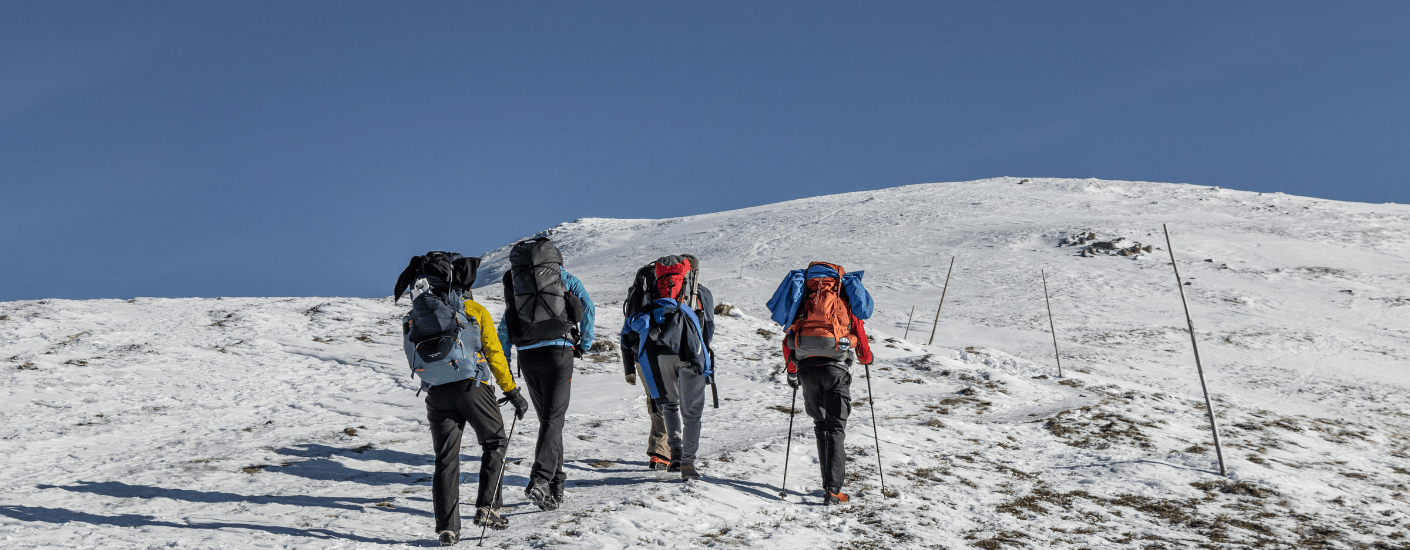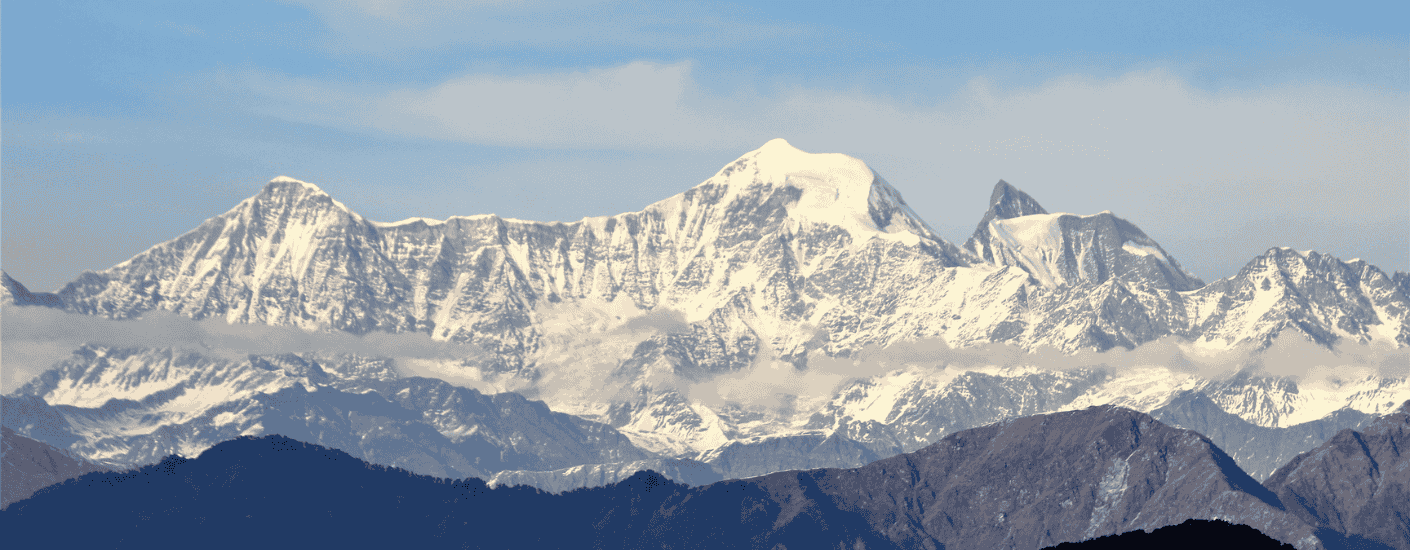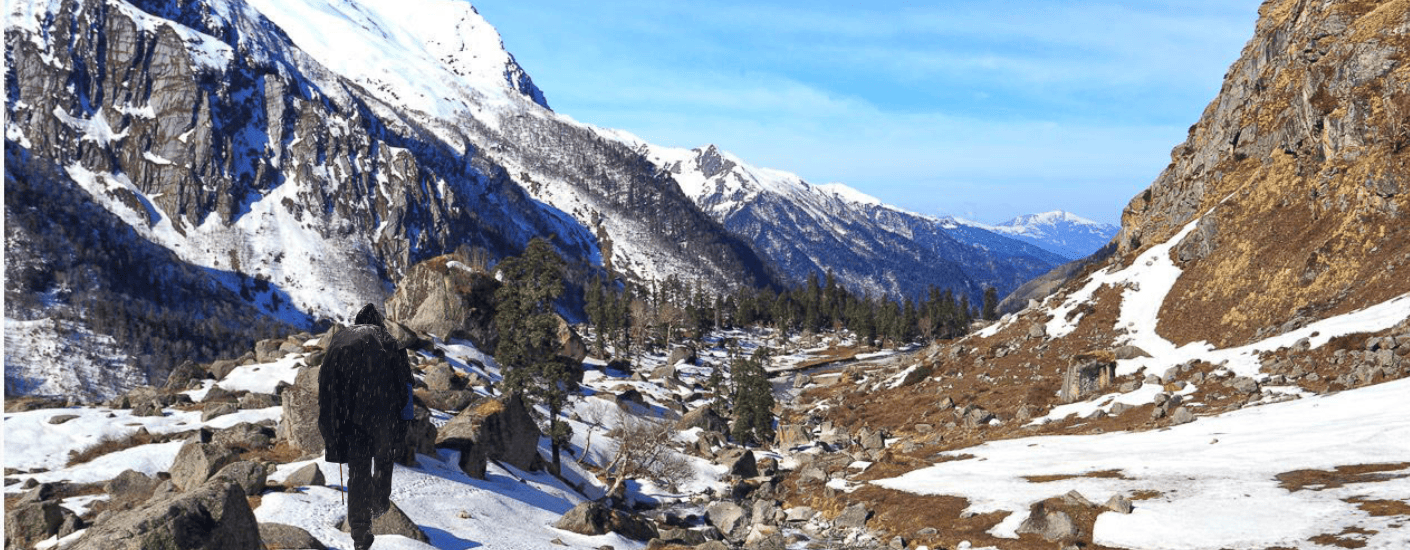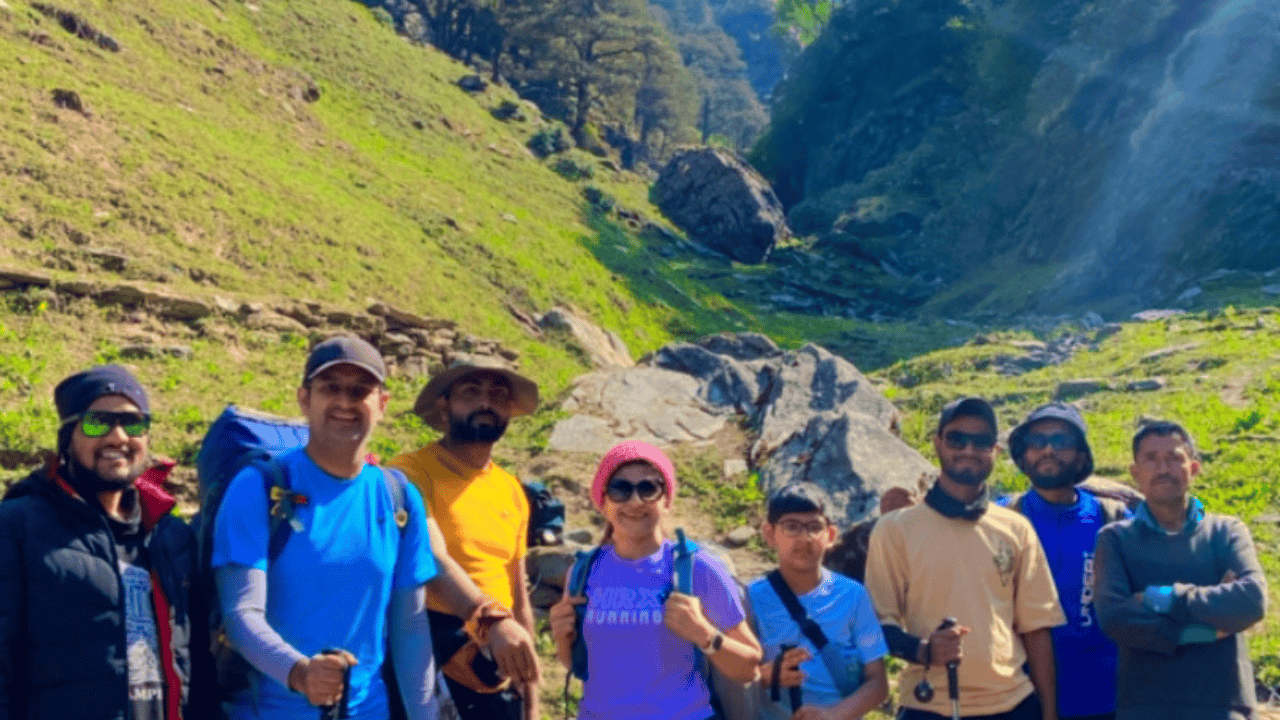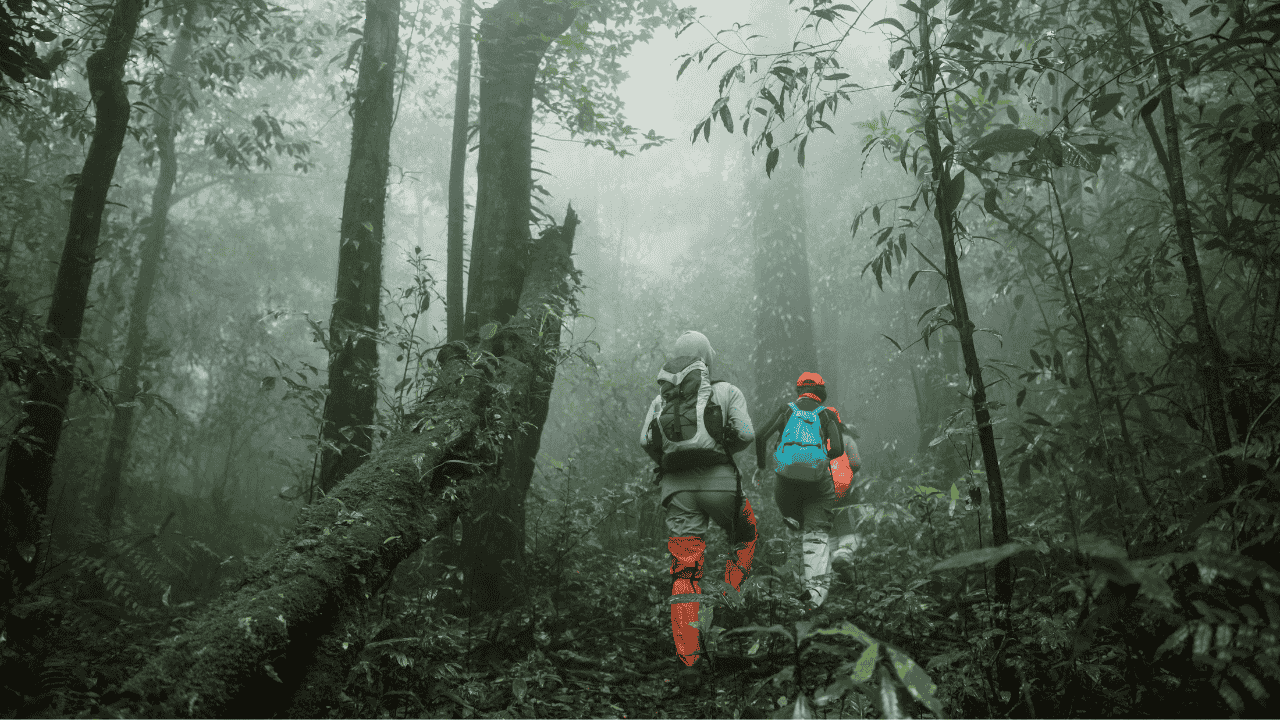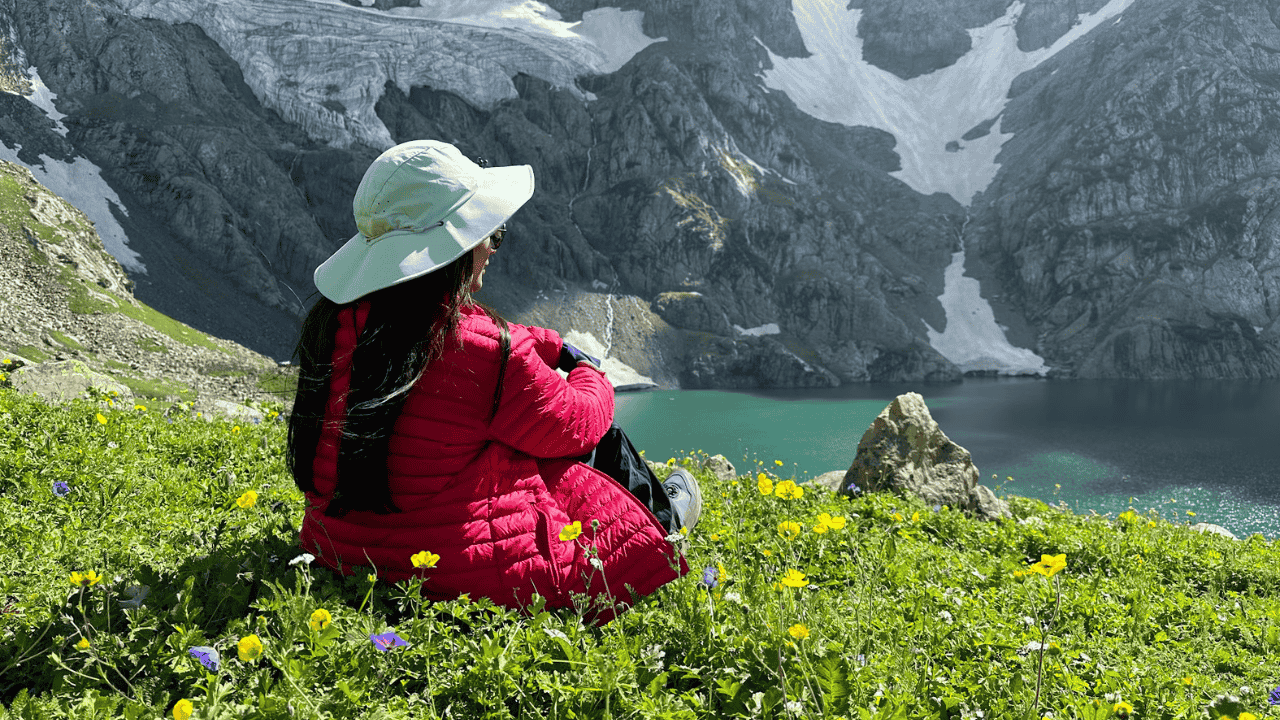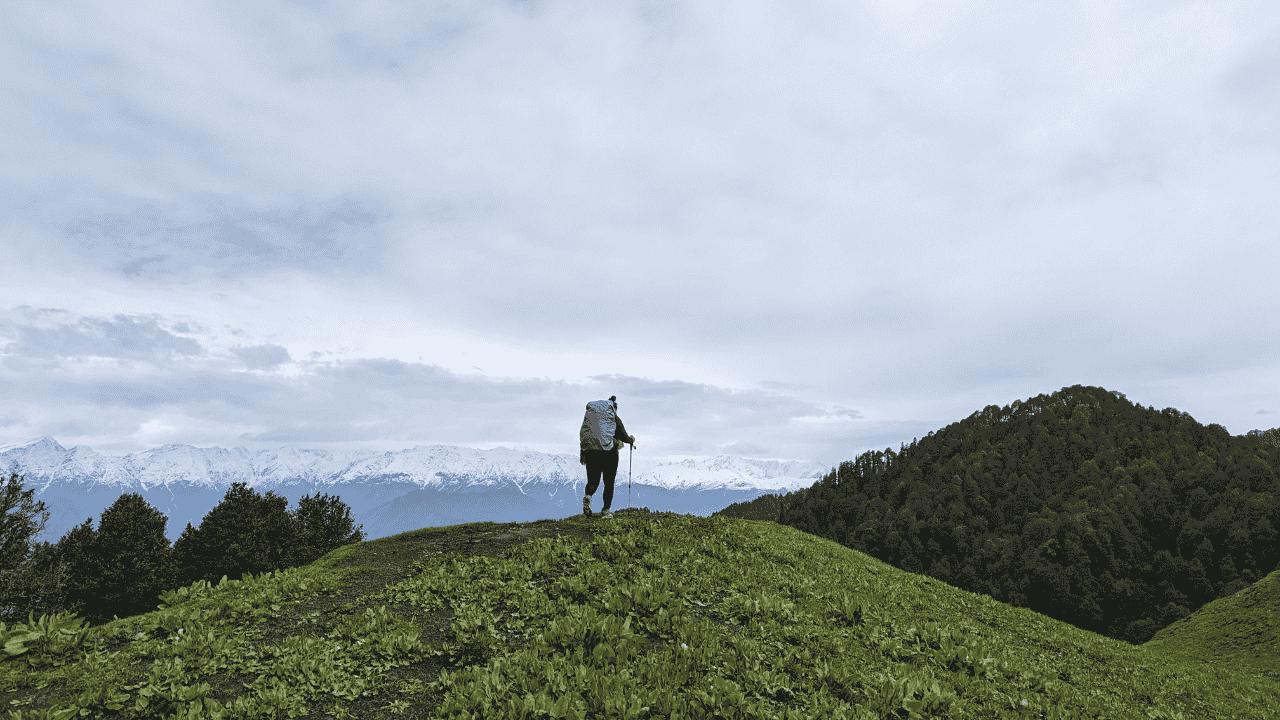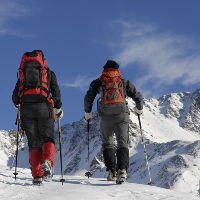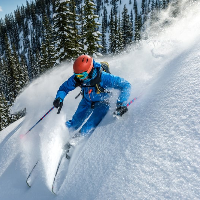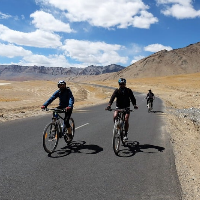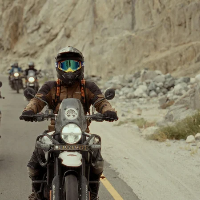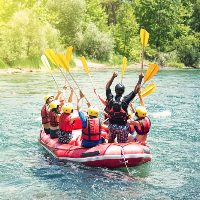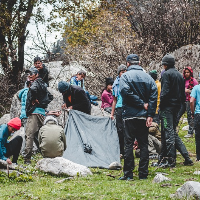Itinerary Description
Introduction
If winter Himalayan treks had a competition, Kuari Pass would emerge victorious. The queen of winter trekking, Kuari Pass is a paradise for snow lovers. But that's not all! This high mountain pass sits at 3,876 meters above sea level, offering magnificent views of Nanda Devi, Kamet, Dronagiri, Hathi Godha Parbat, Dronagiri, Neelkanth, and Mana. Kuari Pass trek is also known as the Curzon trail because Lord Curzon discovered it.
Kuari Pass is famous for three main reasons; firstly, it is the only mountain pass you can trek to in winter. Secondly, it makes a perfect choice for beginners and newbies. And lastly, the most exciting reason–snow! You are in for a treat at the end of this trip - Auli, the skiing capital of India.
Best Time to Trek
Kuari Pass is open all throughout the year except for the monsoon season, i.e. July- August. Each season has its own allure.
Winter: Kuari Pass becomes a snow lover’s delight from November to February. The trail is laden with a white sheen of snow. The unending vistas of beautiful mountains make the scenery all the more surreal. It is the best opportunity to enjoy snowball fights and make snow angels. Prepare well for the winter season as it gets colder in the mountains, and snow adds a little difficulty on the trek.
Spring: The snow begins to melt, and tiny yellow flowers start popping out. You can still find snow in the upper reaches of Kuari and Gorson. The landscape has an alluring contrast of white snow and green meadows.
Summer: Enjoy comfortable temperatures and bright sunny days in May-June. The vast meadows are sprawling with verdant greenery. Expect frequent showers on the trek. So, carry raincoats.
Autumn: The best part of visiting Kuari Pass in the months of September and October is the clear skies. The open skies offer unobstructed views of the big mountains. The meadows are laden with a golden carpet of autumn leaves.
Difficulty Level
Kuari Pass is one of the rare high-altitude treks well-suited for beginners. Soaring at an altitude of 14,000 ft, the trek slowly gains altitude with a gradual and steady ascent. The steep sections of the trek are evenly spaced, giving you plenty of breathing room. It is a great opportunity for first-timers to learn about the nuances of the trekking world. However, prior experience will be helpful.
Short Itinerary
Dehradun (430 mts) to Joshimath (1875 mts) 285 km (9 to 10 Hours)
Drive Joshimath (1875 mts) to Karchi Village (2541 mts) 17 km (1 hours) and trek to Tali Forest Camp (3,362 m) 6.5 km (3362 mts)
Tali Forest Camp (3,362 m) to Kuari Pass (3,814 mts) and back Tali Forest camp (3,362 m) 12 km (7 hours)
Tali Forest Camp (3,362 m) to Gorson Bugyal (3,048 m) - Auli (2,909 m) 10 km (7 hours) and drive to Joshimuth
Joshimath (1875 mts) to Dehradun (430 mts) 285 km (9 to 10 Hours)
Detailed Itinerary
Day 1
Dehradun (430 mts) to Joshimath (1875 mts) 285 km (9 to 10 Hours)
Assemble at Dehradun ISBT early morning. The transport from Dehradun to Joshimath is provided by us if you have booked it through us. We arrive at Joshimath late in the evening. Stay overnight at a guesthouse.
Day 2
Drive Joshimath (1875 mts) to Karchi Village (2541 mts) 17 km (1 hours) and trek to Tali Forest Camp (3,362 m) 6.5 km (3362 mts)
Trail: 6.5 km; The trail is marked with gentle ascents and descents, passing through the villages of Tugashi and Guling and dense oak forests.
Campsite: Tali forest camp, surrounded by oak and rhododendron forests
Thrilling point: Experience the local lifestyle in the Himalayan villages while passing through the Curzon trail. The villages still use the ancient technique of saddle stones for grinding and milling the flour.
Milestone of the day: First rendezvous with Nanda Devi, Hathi-Godha, and Dronagiri
Day 3
Tali Forest Camp (3,362 m) to Kuari Pass (3,814 mts) and back Tali Forest camp (3,362 m) 12 km (7 hours)
Trail: 12 km; the trail starts with a gradual ascent of 3.5 km to Khullara top. Cross the frozen river streams and climb the ridge to get to the pass. Heavy snow may slow you down when trekking in the winter season. Expect to climb a ridge and cross frozen water streams.
Campsite: We retrace our steps and reach back to Tali Forest Camp by late afternoon
Thrilling point: The views from Kuari Top, 700 meters before Kuari Pass, will make you feel invincible.
Milestone of the day: The imposing views of Neelkantha, Nanda Devi, Hathi Godha, Dronagiri, and Pangarchulla will keep you thrilled throughout the trail.
Day 4
Tali Forest Camp (3,362 m) to Gorson Bugyal (3,048 m) - Auli (2,909 m) 10 km (7 hours) and drive to Joshimuth
Trail: 10 km; the trail is easy but long and tiring. Traversing the rolling meadows of Gorson Bugyal feels like walking in the park. The snow in the winter months makes the landscape more stunning.
Campsite: Drive back to Joshimath, an hour's drive from Auli. Overnight stay in the guest house.
Milestone of the day: Catch the reflection of Mt. Nanda Devi in the calm waters of Tali Lake.
Day 5
Joshimath (1875 mts) to Dehradun (430 mts) 285 km (9 to 10 Hours)
We depart from Joshimath early in the morning and reach Dehradun by late evening. If you have returning tickets for the same day, make sure they are for late at night.
WHAT'S INCLUDED
- ●Food as per menu on the trek (Starting Lunch on Day 2)
- ●Forest Permits/Camping Charges, if any
- ●Tents, Sleeping bags, mats, technical equipment
- ●Safety Equipment.
- ●Trek guide, cook, helpers, porters & mules for carrying common luggage.
- ●Services of a Trek Leader.
- ●2 Nights Hotel stay in Joshimath.
WHAT'S NOT INCLUDED
- ●Hotel Meals
- ●Journey Meals
- ●Carriage of Personal Bags during the trek
- ●Cost of any kind of Insurance. Since insurance is mandatory, kindly get yourself insured from our partners ASC360 through www.asc360.com
- ●Any expense of personal nature
- ●Any expense not specified in the inclusion list.
- ●Transportation from Dehradun to Gangotri & back to Dehradun.
Are you eligible for this adventure?
Annapurna Base Camp Trek takes you to a height of 4,130M and is rated a moderate level trek for its long trekking distances. For its elevation and distances, it is recommended for trekkers with some prior experience in the high-altitudes.
Grade
Easy
Max Altitude
3876 mts
Distance
30 km

WMRS Level Required

Terrain

Prerequisite Skills

Fitness Benchmark
WMRS Level Required
WMRS 3
Annapurna Base Camp Trek is a level 4 adventure on the Bikat Rating Scale.
This makes it mandatory for you to have high-altitude experience of preferably multiple treks marked at level 3 on the WMRS. The altitude, the terrain, and the nature of the climb demand a certain level of endurance and a need for you to be aware of how your body reacts to the various features of the high-altitude environment.
If you do not know what level of WMRS trek would suit you best, worry not! Fill out this Form:
We will send you a progression chart to help you comfortably get out of your comfort zone in order to level up and ultimately reach your highest potential in the big, bad world of outdoor adventure.
Packing List
This is a list of essential items for individuals going on a trek with Wanderin’ Man Adventures. This list contains only those items which the participants are required to bring with them. The list excludes those items which are provided by Wanderin’ Man Adventures on the trek. We have divided the items into five categories. All the items in the list are essential except for those marked as optional.
🟩 Trekking Gear
- Rucksack bag with rain cover
- Day Pack Bag - Recommended for treks with summit day
- Head Torch with spare Batteries
- UV protection sunglasses
- Water Bottles - 2 bottles of 1 liter each
🟩 Footwear
- Non-skid, deep tread, high-ankle trekking shoes - 1
- Pair of light weight Slipper/Sandals for the campsite - 1
🟩 Clothing
- Quick Dry Warm lower or Track Pants - 2
- Full sleeves T-shirts/Sweatshirts (1 for every 2 days of trekking)
- Pair of thick woolen socks (1 pair for every two days of trekking)
- Thermal Body warmer Upper & Lower - 1
- Undergarments (1 for each day of the itinerary)
- Warm jacket closed at wrist & neck - 1
- Full sleeves sweater - 1
- Rain wear (Jacket & Pants) - 1
- Pair of water-proof, warm gloves - 1
- Woolen cap - 1
- Sun shielding Hat - 1
- Multipurpose Buff - 2
🟩 Toiletries
- Personal toiletries kit (Small Towel, Toilet paper, paper soap, Bar soap, toothbrush, toothpaste, cold cream, etc.)
- Sun screen lotion small pack (SPF 30 & Above) - 1
- Lip Balm small pack - 1
🟩 Utensils
- Small size, Lightweight & Leak proof lunch box - 1
- Plate - 1
- Spoon - 1
- Tea/Coffee (plastic) Mug - 1
🟩 Miscellaneous
- Camera (Optional)
- Carry your medicines in plenty in case you have any specific ailment. Consult your doctor before joining the trek.
- Dry fruits, Nuts, Chocolate bars (Optional)
Note-
- For long treks, please carry a spare sunglasses.
- For winter trek please try to carry a thermal water bottle.
- For long winter treks, please carry an extra pair of warm pants.
Frequently Asked Questions
Why Wanderin Man?
(SET- Safety, Expertise & Trust )

Safety
- ●Small Group Size in the ratio of 6:1 (participant to leader)
- ●No compromise on safety and sustainability promise
- ●Experienced and Certified Mountaineering Professional Leaders
- ●Region Mapped with Emergency Evacuation Plan
- ●Certified Standard Equipment by UIAA (International Climbing and Mountaineering Federation certification) & other Similar Bodies
- ●Minimized Risk Management Standard Operating Procedure are applied for every Trek and tour
- ●Certified First Aid Support and Doctors* with constant availability of Safety Equipments like Medical Kit, Rescue Kit
- ●Constant communication is aided with the help of Communication Devices
- ●Certified and registered Transporter for transportation purpose

Expertise
- ●Founders of the company have extensive experience of 15 years having organized approx 2000+ trekking, Expeditions and other adventure activities.
- ●Wanderin’ Man Adventures operating expeditions above 8000 mts.
- ●Under the umbrella of Wanderin’ Man Adventures 15 + adventure activities Programs have been organized
- ●Founders have mountaineering certifications from the esteemed mountaineering institutes of India.
- ●Team is composed of experienced mountaineers and trek leaders with thorough understanding of norms and procedures.

Trust
- ●Trust has been the hallmark of our company since its inception be it any program on the list.
- ●Special emphasis is laid on the use of standard procedures and equipments as per the mountaineering norms
- ●95% of our clients have availed our service on repeat basis.
- ●Our business has expanded primarily based on the “word of mouth” from our existing clients to new ones
What Our Customers Say
Cancellation Policy
Cash Refund (All events including Friendship Peak Expedition except other Mountaineering Expeditions) - Cash refunds are only available for bookings made without any discounts, such as promotional codes or dynamic discounts. Additionally, cash refunds are not available for shifted batch bookings or if the booking status is "Booked". The amount of the refund will be determined based on the following guidelines:
Cancellations made up to 45 days before the departure date
Cancellations made up to 31 days before the departure date
Cancellations made between 30 and 21 days before the departure date
Cancellations made between 20 and 11 days before the departure date
Cancellations made less than 11 days before the departure date are not eligible for a cash refund.
Similar Adventures
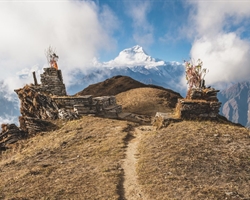
Khopra Ridge Trek
Less popular, less crowded, more beautiful alternative to ABC
- Nepal
- 10 Days
- BRS 4
- 4767 m
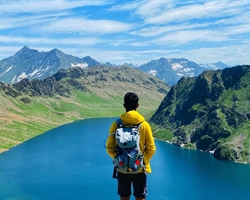
Tarsar Marsar Trek
A Shorter and Easier Alternative to the Kashmir Great Lakes Trek
- Kashmir
- 7 Days
- BRS 4
- 4024 m

Hampta Pass Trek
An Enchanting Cross-Over from Manali to Spiti
- Himachal
- 5 Days
- BRS 4
- 4200 m
 Max Participants :
15
Max Participants :
15
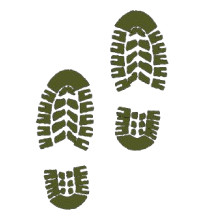 Trail Type :
circle trail, Start one place and end to another place
Trail Type :
circle trail, Start one place and end to another place


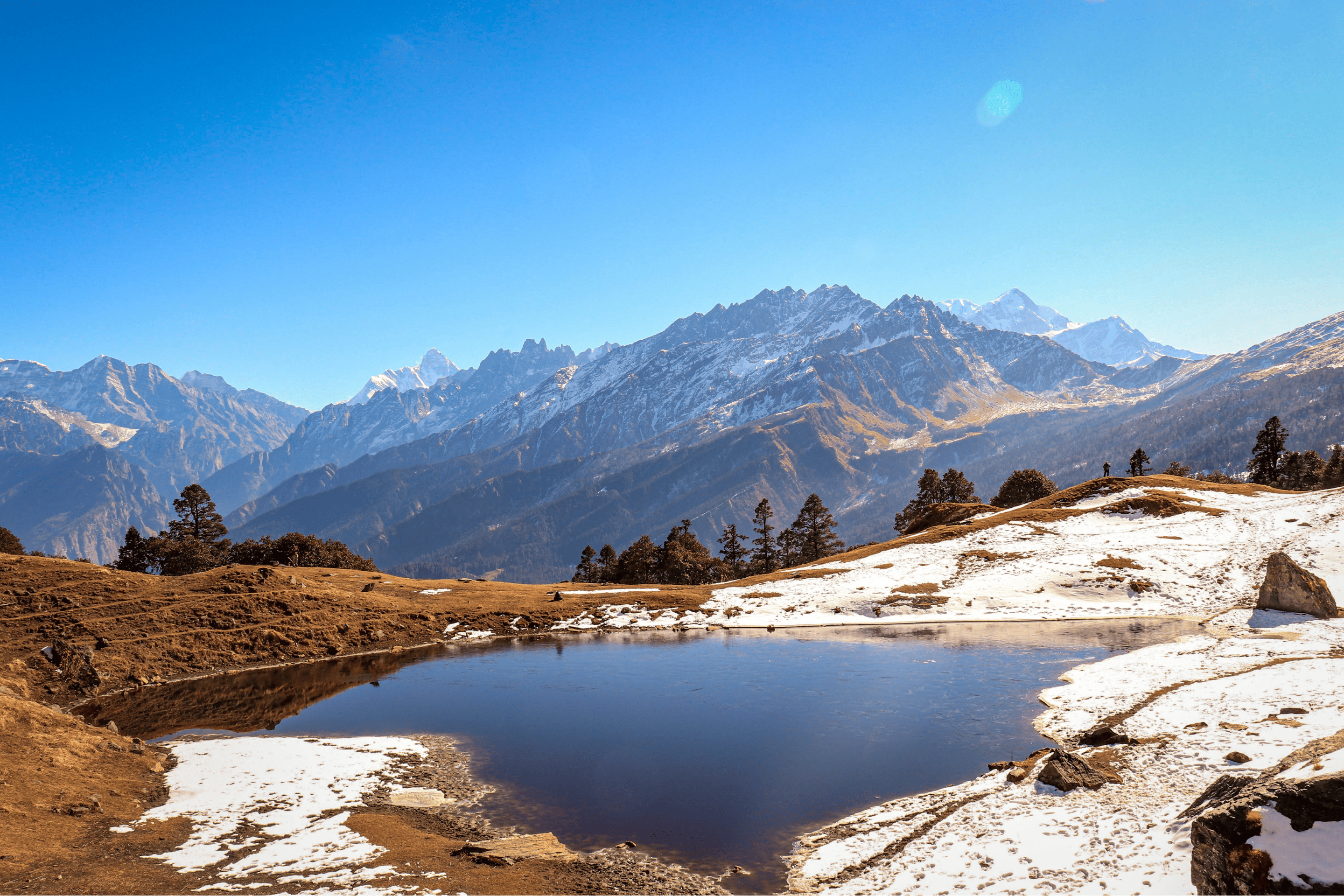

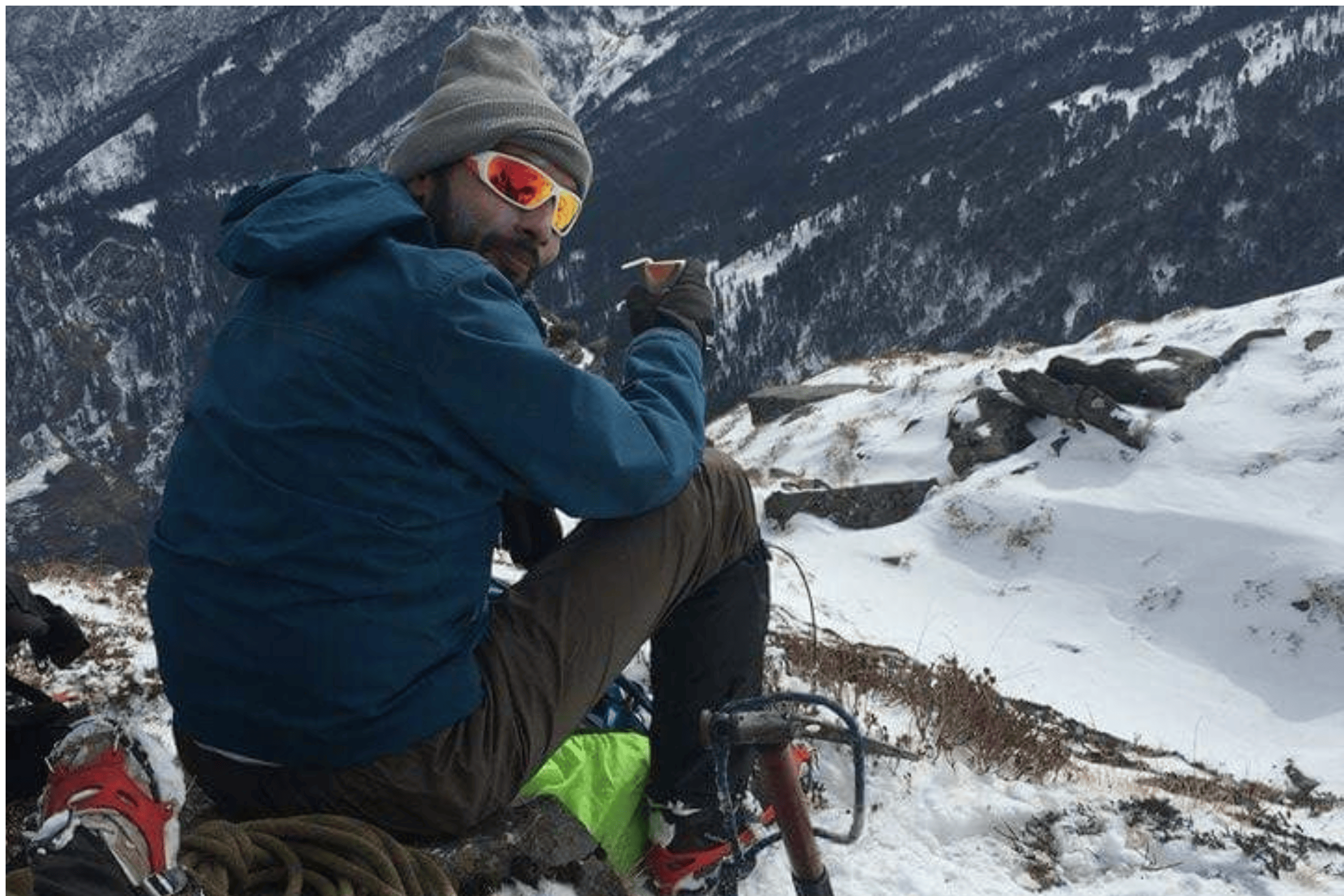
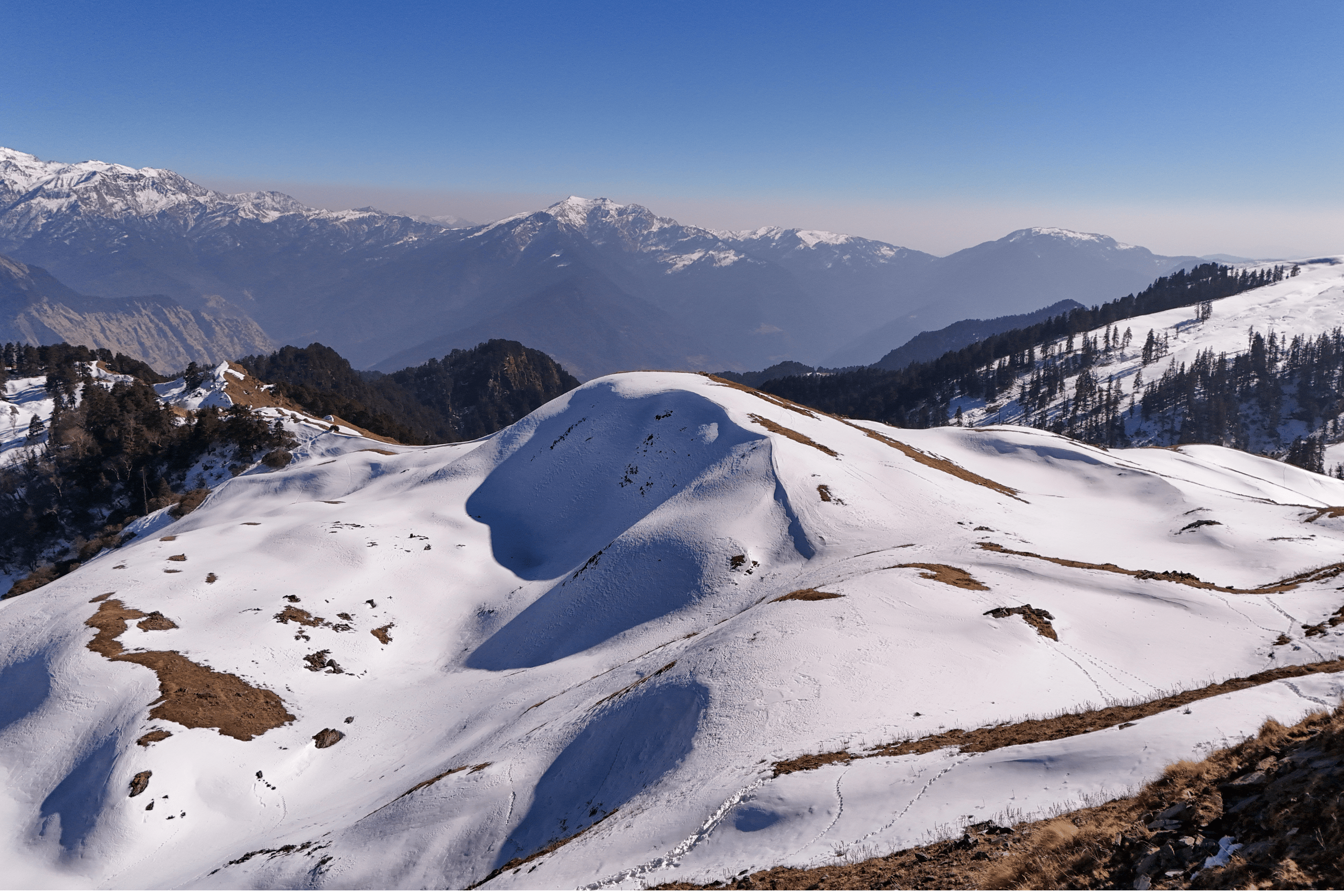


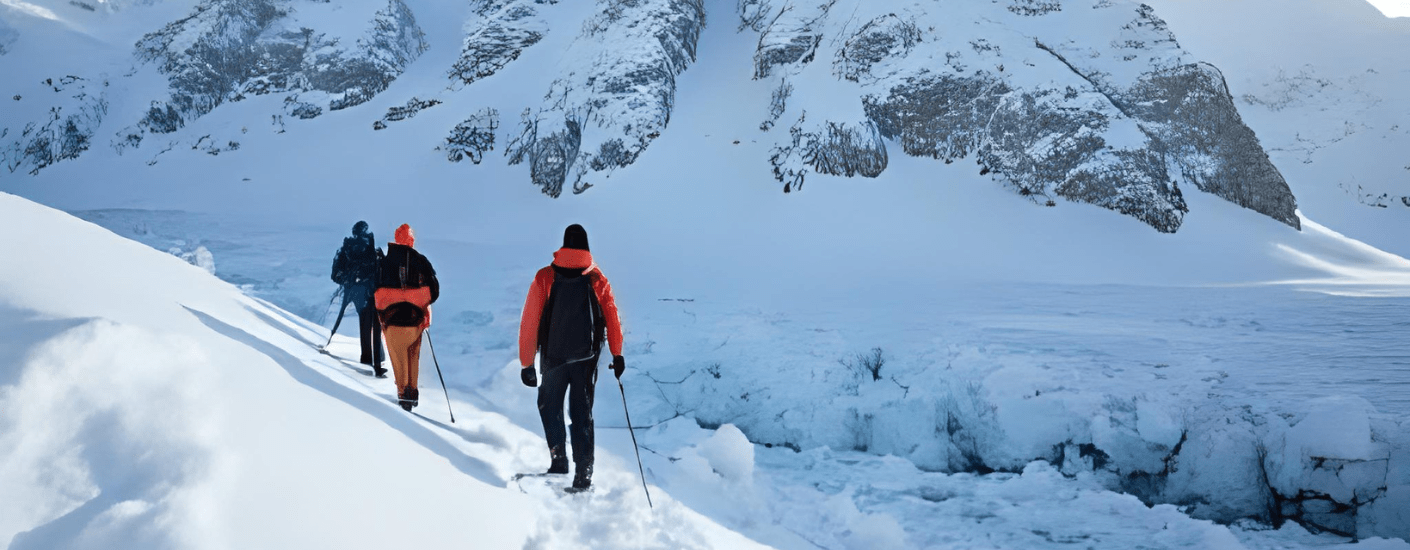
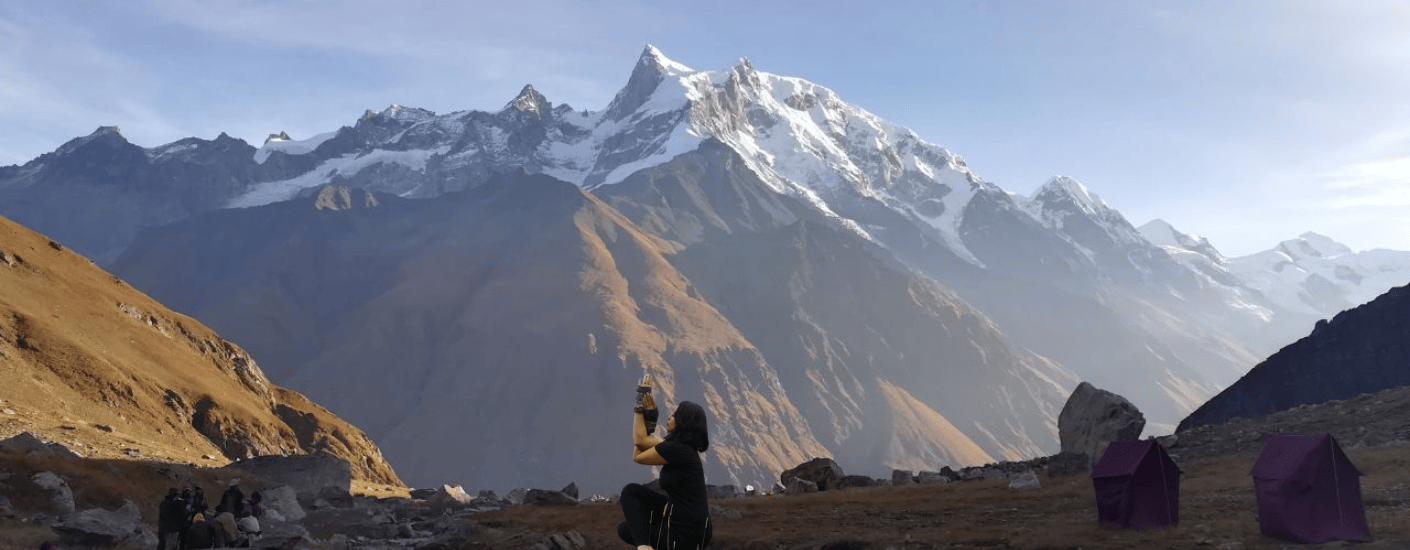

.png)
